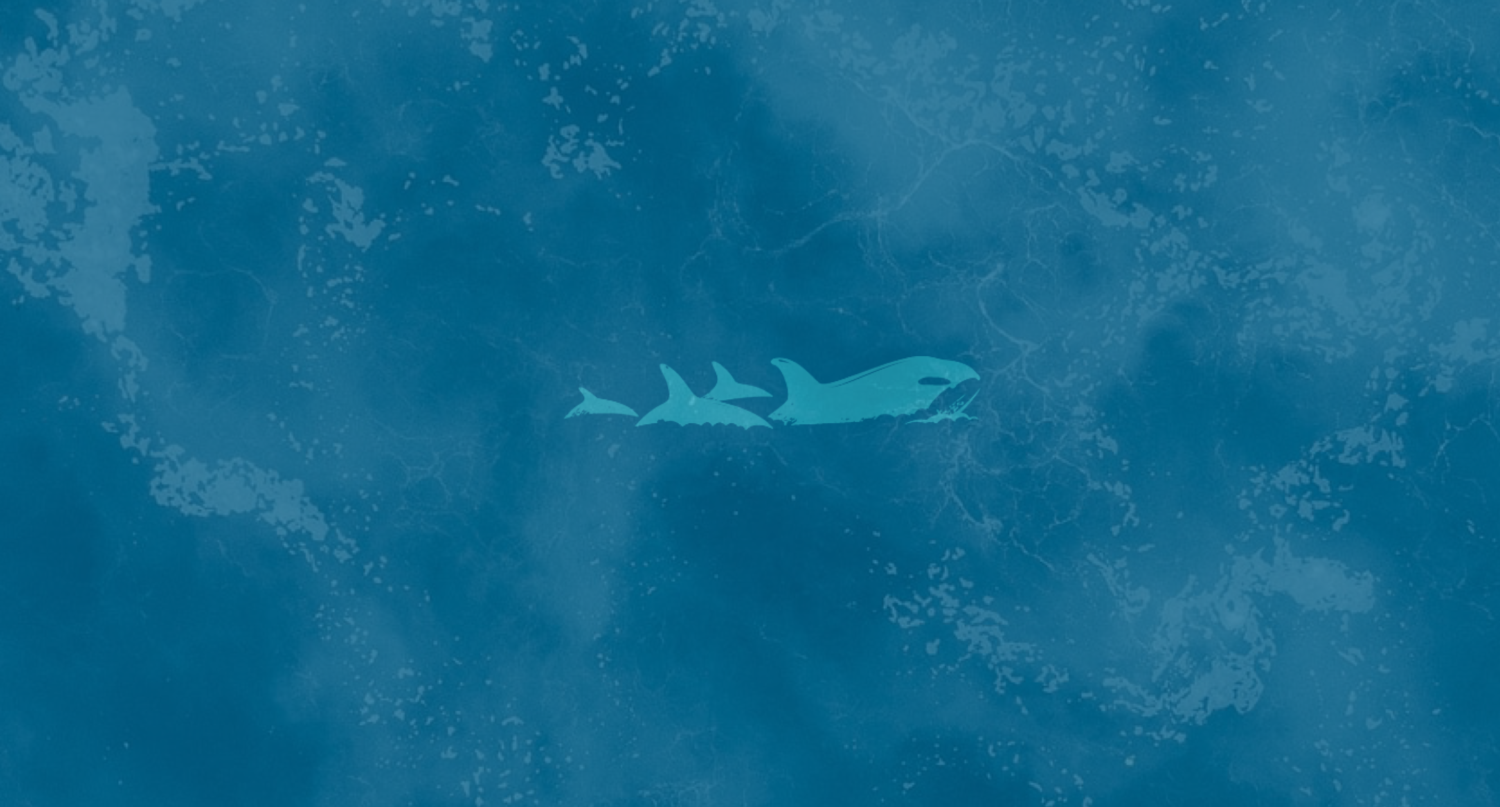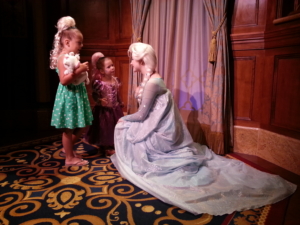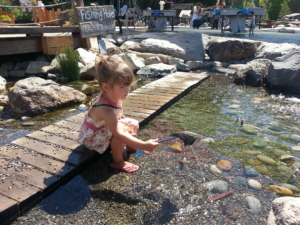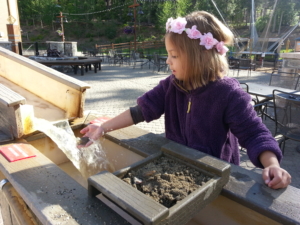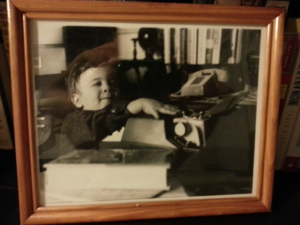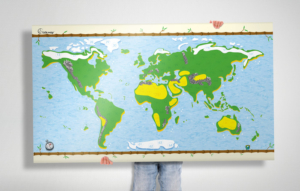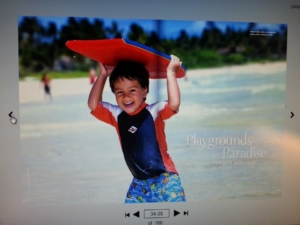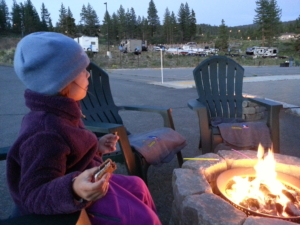
L eating s’mores, before the skies got dark.
She still hasn’t stopped talking about the rings.
Sure, L and I learned about galaxies during our Monday night tour with an outfitter named Tahoe Star Tours, and, yes, we spotted stars including Vega and Polaris. We even peered through a giant telescope to gaze upon planets such as Jupiter and Mars.
But for my Big Girl, the biggest moment of our way-past-bedtime adventure in a dark parking lot on the edge of the Northstar California ski resort was seeing Saturn for the first time in real life.
Of course she’d seen pictures of Saturn before. She even had tried drawing it—part of a bigger picture about a planet called Cats (where, obviously, all of the inhabitants were, well…um…cats). But to see it through the lens of a Celestron 14 HD telescope, a device that enlarged the planet so clearly that we also could identify its moons, now THAT was a treat.
“It’s like someone painted it up there, Dada,” she said as she peered into the eyepiece. “An orange dot with the most beautiful rings.”
I couldn’t really blame her for the excitement; the four of us had a blast during this week’s 4-day family excursion to Lake Tahoe (other posts to follow soon), but Monday’s evening activity—which L and I did solo—was the undisputed highpoint of the trip. For both of us.
The experience began promptly at 8:30 p.m. L and I drove down from our hotel, The Ritz-Carlton, Lake Tahoe, and met Tony Berendsen, who owns Tahoe Star Tours, at the entrance to the resort’s satellite parking lots. Down the hill, on the edge of one of the lots, Berendsen had set up what he called a “Cosmoarium,” a tiny klatch of chairs around some firepits.
He welcomed us with s’mores and hot chocolate (which L loved), then regaled us with a presentation that included (in no particular order) original poetry, videos, songs (“California Stars,” which was written by one of my faves, Woody Guthrie), pop-quizzes, and more poetry.
(Berendsen himself is quite a supernova. The amateur astronomer has been gazing into the heavens above the Sierra for the last 20 years. He is a past president of the Astronomical Society of Nevada, telescope operator for the Fleischmann Planetarium in Reno, and president of the Northern Nevada Science Coalition. He’s also an accomplished poet.)
After the video, after one of Berendsen’s poems, L started to lose interest. Thankfully, by then the skies had darkened enough to start gazing, and Berendsen led us over to a part of the lot where his son, Ryan, had set up an array of telescopes, and stepstools so L could see.
We gazed upon Jupiter first: a big white ball in the middle of the eyepiece. Then the Berendsens pointed out some stars—Vegas, Polaris, and others—and we looked at them with our naked eyes. Finally, Ryan repositioned the telescope (with the push of a button), trained it on Saturn, and invited L to climb the stepstool for a closer look.
That’s when she saw the rings. And screamed, “I see the rings!” A lot.
We spent the next 15 minutes or so ogling those rings, learning about comets and looking for the Milky Way. Finally, around 9:30 p.m., L declared she was tired and we called it a night.
In the car on the way back to the hotel, L pulled a Berendsen and waxed poetic about planets and comets and galaxies and suns. She spoke of alien life forms (“I bet they wear tutus”) and gravity (“That’s what makes us pee, Dad”).
Her best insights focused on Saturn; how the planet had rings because it was engaged to be married, how it became orange because the rings are made of gold, and how, someday, the four of us are going to take a spaceship and vacation at The Ritz-Carlton, Saturn (which, apparently, according to my daughter, currently is under construction), so we can see the rings up-close.
The stories have continued relentlessly since that night, getting more elaborate and creative by the day.
As a learning experience, our tour with Tahoe Star Tours quite literally was out of this world. As a family travel excursion, it was something my daughter will remember for the rest of her life.
What’s the most incredible family travel excursion you’ve had and why?

